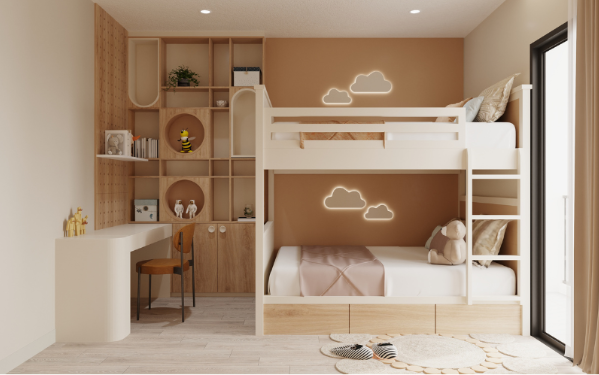A shared space calls for structure, efficiency, and cooperation to keep every inhabitant comfortable. Even slight miscalculations in furniture selection or layout can disrupt routines and create tension. A thoughtful plan makes the environment more welcoming for each person who uses it. By considering essential guidelines, you reduce clutter, preserve harmony, and promote restful sleep. This article examines valuable do’s and don’ts that help transform a hectic shared space into a peaceful retreat. Whether you plan to buy a loft bed in Singapore or simply upgrade a current arrangement, these insights provide clarity and direction.
Do #1: Measure Your Room Carefully
Accurate measurements guide many decisions in a shared bedroom. Space planning starts with understanding length and width, leaving enough walking area around larger pieces. It helps you decide if a bunk bed or another frame suits your layout. Mapping outdoor swing clearance avoids collisions with furniture. When you measure distances between walls, windows, and entrances, you ensure each piece fits logically. A structured approach prevents the stress of realising an item overpowers the room or forces you to rearrange key items later.
Do #2: Select the Right Bed Height
Bed height matters for comfort and accessibility. Individuals sometimes overlook the distance from the floor to the mattress, which can be an issue if the bed sits too low or too high. In smaller rooms, a double-decker bed creates vertical sleeping zones, freeing floor space for storage or study desks. Raised beds also make room for boxes or drawers underneath, helping reduce clutter. Checking bed height reduces strain on your knees and back when getting in or out, which benefits everyone sharing the space.
Do #3: Create Designated Zones
Organised zones clarify each occupant’s responsibilities and reduce conflicts. Label specific areas for sleep, study, and leisure. A writing desk next to a window might be the reading corner, while a compact shelving unit could store shared items. Room dividers or curtains can grant a measure of privacy without permanent walls. When you allocate storage bins or small cabinets for each user, you remove confusion over belongings. This zoning strategy respects individual preferences while maintaining a clean environment that feels open and balanced.
Don’t #1: Overcrowd the Layout
Crowding a shared bedroom with excessive furniture restricts movement and increases the risk of accidents. Instead of squeezing two full-size cabinets and multiple chairs into a tight spot, consider ways to consolidate. Many choose to buy loft beds in Singapore for children who share a room, keeping floors free for other activities. An airy layout simplifies routine cleaning, fosters better ventilation, and minimises conflict over personal boundaries. Open pathways also reduce the chance of knocking into sharp corners.
Don’t #2: Neglect Proper Lighting
A poorly lit bedroom strains eyesight and encourages mistakes when searching for items. In shared settings, multiple occupants might have different schedules, so layered lighting options help accommodate unique needs. One person might prefer a table lamp for reading, while another might rely on a dim overhead fixture. Failing to plan these alternatives fosters annoyance when a single bright light keeps someone awake. Strategic lighting creates a relaxing zone for rest while allowing quick navigation during late-night tasks or early-morning departures.
Don’t #3: Dismiss Storage Solutions
Scattered clothes and random belongings quickly crowd floors if you lack sufficient storage. Failing to plan wardrobes, shelving, or under-bed compartments leads to daily frustration. Installing hooks behind doors, using stackable drawers, or choosing modular units stops clutter from overwhelming the space. Concealed storage under a double-decker bed can hold suitcases or out-of-season apparel. By assigning each occupant a dedicated space, you encourage tidiness. Clear floor areas reduce visual stress, making a shared bedroom seem larger and more functional.
Conclusion
A well-organised shared bedroom improves daily life by streamlining routines and reducing clutter. Precise measurements, proper bed height, and designated zones foster independence without chaos. On the flip side, failing to control room layout or lighting can fuel ongoing annoyance and hamper sleep. Whether you opt for a bunk bed in a children’s room or a double-decker bed for adults with limited space, you gain efficiency by planning carefully. Practical storage and transparent discussions sustain a pleasant environment that serves every occupant’s needs. When each detail is managed thoughtfully, the outcome is a stress-free zone that promotes harmony, restful nights, and productive days.
For expert guidance on stylish beds and other solutions, contact Kids Haven and turn your shared space into a seamless, satisfying living area.
